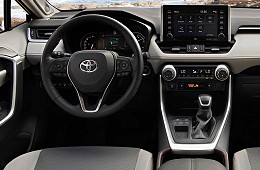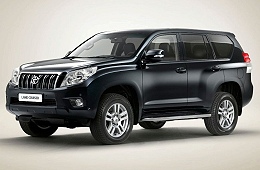|
|
VS |
|
This is Mitsubishi Outlander PHEV Vs Toyota RAV4 Hybrid comparison for 2022. Electric and Hybrid SUVs are the next battleground for manufacturers as the world moves towards reducing dependence on fossil fuels. The next series of comparisons will focus on SUVs not exclusively or directly powered by fossil fuels aka what we have started last month. These are two similar yet different types of Hybrid powered SUVs – the most common being a petrol motor and a electric motor.
Mitsubishi Outlander PHEV Vs Toyota RAV4 Hybrid exterior comparison: Both appear to be designed at about the same point in time but the Outlander looks like a newer design. Furthermore the designs are no different to the regular fossil fuel version they are based on. While new Toyota design claims to be more interesting the RAV4 is not. The Outlander has the better front end design with the current brand signature design language which we think looks great. In the comparison the RAV4 front is similar to other Toyota models in the US but not for the rest of the world. Base model trim for both are cheap looking but that is the point of the base grade, unfortunately the pricing doesn’t quite fit that class but 2020 standards.=
Mitsubishi Outlander PHEV Vs Toyota RAV4 Hybrid interior comparison: The interiors for both models are the same as their normal petrol or diesel versions with the Outlander looking much nicer than the RAV4. The RAV4 interior is good but dated compared to the Outlander. Top level trim in the RAV4 doesn’t match the ambience of the top spec Outlander. Neither are luxury interiors by 2022 standards but on the way there and are pretty good to look at and feel.
Mitsubishi Outlander PHEV Vs Toyota RAV4 Hybrid engine and technology comparison: Both have petrol engines and at least 1 electric motor along with batteries. The Outlander is a PHEV which means it is a plug in hybrid vehicle. A PHEV vehicle means that it can run a fair distance on battery power only and Mitsubishi claims that the Outlander can travel up to 80Km. If you only travel say 50Km you will not need to fill up the petrol tank if you charge it overnight. Run the battery down and the engine will start charging the battery. The RAV4 is a traditional Toyota Hybrid which means limited distance on battery power only. The petrol engine is running most of the time so uses more petrol. Both are proven systems and which one is better depends on what you use the SUV for. For example, if you only travel say to the train station and back daily the PHEV will not need petrol just some charging every few days.
Mitsubishi Outlander PHEV Vs Toyota RAV4 Hybrid drive report : N/A
The conclusion and winner of the Mitsubishi Outlander PHEV Vs Toyota RAV4 Hybrid comparison is the Mitsubishi Outlander PHEV and the one we would buy wiht our own money. The Toyota RAV4 is a very popular SUV and there is a long back order – if you want certain model grades and specification. Likewise the Outlander is hard to buy in certain model grades however not as popular and that has purely to do with odd model introductory model releases. The Outlander PHEV is the best model of the range due to its ability run purely on battery for an acceptable battery only distance (up to 80Km) and the petrol power plant if you want to travel longer distances. The RAV4 Hybrid is a great compromise too but it’s inability to drive on electric power alone for any great distance except in heavy traffic is a big disadvantage and that it is not a economical as the Outlander PHEV if used in a commuting role.
Now choosing to pay a little more between a Hybrid or PHEV model is easy enough. PHEV if you want the electric car experience on a daily basis provided you can charge it overnight and without the electric only range anxiety. The Hybrid if you are still not against paying for petrol. Since the Outlander costs the same as the RAV4 we prefer the PHEV setup.
| Mitsubishi Outlander PHEV | Toyota RAV4 Hybrid |
 |
 |
| Engines | |
| 4 Cylinder – Petrol – PHEV – Hybrid 2.4 Litre (2488cc) – 91 Octane 98Kw @ 5000 RPM 195Nm @ 4300 RPM 85Kw Front electric motor 100Kw Rear electric motor Claimed 185Kw (Combined) Claimed 450Nm (Combined) |
4 Cylinder Petrol 2 Litre (1987cc) 91 Octane DOHC EFI VVT Claimed 127Kw @ 6600RPM Claimed 203Nm @ 4400RPM |
| 4 Cylinder Petrol 2.5 Litre (2487cc) DOHC EFI VVT Claimed 152Kw @ 6600RPM Claimed 243Nm @ 4000RPM |
|
| 4 Cylinder Petrol Hybrid 2.5 Litre (2487cc) DOHC EFI VVT Claimed 163Kw @ 4000RPM Claimed 221Nm @ 3600RPM |
|
| Weight | |
| Kerb weight FROM 2114Kg Towing capacity up to 1600kg |
Kerb weight FROM 1515Kg Towing capacity up to 1500kg *Dependimg on engine type |
| Fuel capacity & consumption | |
| Battery size 20kWh Up to 55 litres IL4 2.4 Petrol 1,5 Lts per 100km AVG (CVT) |
Up to 55 litres IL4 2.0 litre Petrol 6.8 litres per 100km IL4 2.5 litre Petrol 7.3 litres per 100km IL4 2.5 litre Hybrid 4.8 litres per 100km |
| Other specifications | |
| CVT Auto Overall height/width 1745/1862 Overall length/wheelbase 4710/2706 4WD system: 2WD or On Demand AWD ANCAP Safety: 5/5 |
6 speed Auto/manual or CVT Auto Overall height/width 1685/1865 Overall length/wheelbase 4615/2690 4WD system: 2WD or AWD ANCAP Safety: 5/5 |
| Capability | |
| Angle of: (degrees) Approach 18.3 Departure 22.2 Breakover 18.1 Ground clearance (unloaded) 210mm Water Fording depth xxmm Max |
Angle of: (degrees) Approach xx Departure xx Breakover xx Ground clearance (unloaded) 198mm Water Fording depth xxmm Max |
| Performance | |
| – | |
| Pricing | |
| 2022 $54,590 – 68,590 AUD 2018 $28,750 – 55,490 AUD |
2022 FROM $36,550 – 55,550 AUD 2019 FROM $30,640 – 47,140 AUD *Always check with the dealer for up to date pricing, specifications, on-road costs, accessories and specials etc.. everything as usual is subject to change! |
| *Specs change due to model grade and configuration. Always check with the dealer for up to date pricing, specifications, on-road costs, accessories and specials etc.. everything as usual is subject to change! | |





